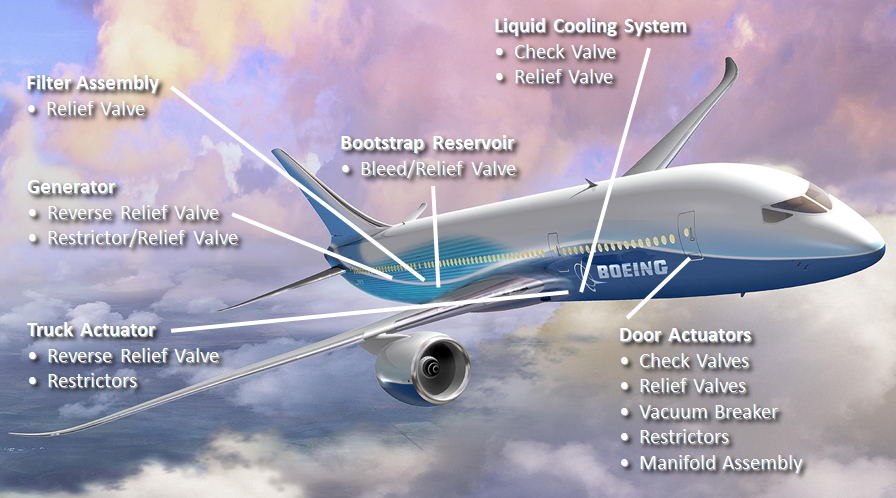
Cost is the key driver for components in the commercial aircraft industry. Not just the cost to procure the component, but the total cost of ownership. Reliability is a key cost driver for these criteria.
The key to aircraft efficiency is to minimize fuel burn. Using smaller, lighter and more efficient valves to control weight and fuel burn is another way to lower hourly operating costs. Valves are used in the management of fuel systems to control the speed of the aircraft. Hydraulic systems are used on aircraft to move and actuate landing gear, flaps and brakes. Commercial aircraft use these systems also on flight controls, spoilers, thrust reversers and other similar applications.
Valves used in commercial aircraft can be used to control and regulate upstream and downstream fluid pressure, lubricate bearings, bypass the flow of a fluid, mix different fluids, control thermal properties and restrict bleed, dump or stop the flow of fuel or other liquids.
Not only must the systems deal with the expected variables in ambient temperature that are experienced across the whole of the planet’s surface, but temperatures fall well below zero at an aircraft’s cruising altitude. Most commercial systems are designed to tolerate conditions from -65° to 160° F.
The majority of commercial aircraft have three redundant hydraulic systems, which are often separated geographically on the plane. Newer aircraft designs use EHAS to reduce the amount of hydraulic fluid required to actuate the flight controls. Ausco has developed a special line of fast-acting valves specifically for use in EHAS
Ausco works closely with a variety of aircraft manufacturers and Tier 1 suppliers to create fluid control solutions to optimize the balance of cost, weight and performance.
Contact us now to begin your journey working with the premier designer of aerospace valves and fluid subsystems.
